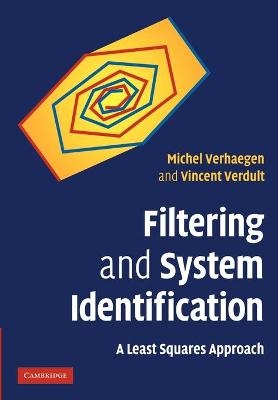
Filtering and System Identification
A Least Squares Approach
Seiten
2012
Cambridge University Press (Verlag)
978-1-107-40502-8 (ISBN)
Cambridge University Press (Verlag)
978-1-107-40502-8 (ISBN)
This 2007 book discusses the design of reliable numerical methods to retrieve missing information in models of complex systems.
Filtering and system identification are powerful techniques for building models of complex systems. This 2007 book discusses the design of reliable numerical methods to retrieve missing information in models derived using these techniques. Emphasis is on the least squares approach as applied to the linear state-space model, and problems of increasing complexity are analyzed and solved within this framework, starting with the Kalman filter and concluding with the estimation of a full model, noise statistics and state estimator directly from the data. Key background topics, including linear matrix algebra and linear system theory, are covered, followed by different estimation and identification methods in the state-space model. With end-of-chapter exercises, MATLAB simulations and numerous illustrations, this book will appeal to graduate students and researchers in electrical, mechanical and aerospace engineering. It is also useful for practitioners. Additional resources for this title, including solutions for instructors, are available online at www.cambridge.org/9780521875127.
Filtering and system identification are powerful techniques for building models of complex systems. This 2007 book discusses the design of reliable numerical methods to retrieve missing information in models derived using these techniques. Emphasis is on the least squares approach as applied to the linear state-space model, and problems of increasing complexity are analyzed and solved within this framework, starting with the Kalman filter and concluding with the estimation of a full model, noise statistics and state estimator directly from the data. Key background topics, including linear matrix algebra and linear system theory, are covered, followed by different estimation and identification methods in the state-space model. With end-of-chapter exercises, MATLAB simulations and numerous illustrations, this book will appeal to graduate students and researchers in electrical, mechanical and aerospace engineering. It is also useful for practitioners. Additional resources for this title, including solutions for instructors, are available online at www.cambridge.org/9780521875127.
Preface; 1. Introduction; 2. Linear algebra; 3. Discrete-time signals and systems; 4. Random variables and signals; 5. Kalman filtering; 6. Estimation of spectra and frequency response functions; 7. Output-error parametric model estimation; 8. Prediction-error parametric model estimation; 9. Subspace model identification; 10. The system identification cycle; Notation and symbols; List of abbreviations; References; Index.
| Erscheint lt. Verlag | 19.7.2012 |
|---|---|
| Zusatzinfo | Worked examples or Exercises |
| Verlagsort | Cambridge |
| Sprache | englisch |
| Maße | 170 x 244 mm |
| Gewicht | 670 g |
| Themenwelt | Mathematik / Informatik ► Informatik ► Theorie / Studium |
| Mathematik / Informatik ► Mathematik ► Angewandte Mathematik | |
| Technik ► Elektrotechnik / Energietechnik | |
| Technik ► Nachrichtentechnik | |
| ISBN-10 | 1-107-40502-5 / 1107405025 |
| ISBN-13 | 978-1-107-40502-8 / 9781107405028 |
| Zustand | Neuware |
| Haben Sie eine Frage zum Produkt? |
Mehr entdecken
aus dem Bereich
aus dem Bereich
was jeder über Informatik wissen sollte
Buch | Softcover (2024)
Springer Vieweg (Verlag)
CHF 53,15
Grundlagen – Anwendungen – Perspektiven
Buch | Softcover (2022)
Springer Vieweg (Verlag)
CHF 48,95
Eine Einführung in die Systemtheorie
Buch | Softcover (2022)
UTB (Verlag)
CHF 34,95


